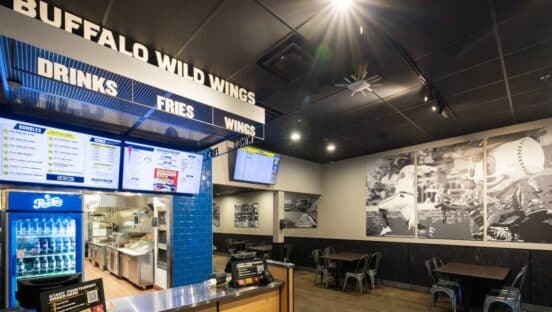Diners often have a wide variety of unique preferences, making restaurant-going an incredibly personal experience. Not to mention, positive online reviews are a top consideration for potential customers given the saturated nature of the food service industry. Voice of the Customer (VoC) is used by marketing and CX professionals to maximize demand generation and customer loyalty. VoC is a critical part of building a brand’s reputation and capturing all kinds of feedback across a multitude of digital platforms so restaurants can make agile changes to create repeat customers.
What is Voice of the Customer?
Voice of the Customer is the process of capturing key information regarding customers’ thoughts and feelings about their experience with a business’s products or services. It provides brands with a synopsis of their customers’ expectations, preferences, experiences, needs, and feedback. Instead of just acquiring this data, VoC also focuses on analyzing it to identify key trends and points of friction so restaurant brands can make cost-effective changes to meet customer expectations in a highly competitive market, ultimately maximizing customer lifetime value.
VoC is opening various opportunities for foodservice brands to shape and improve their service offering into something diners truly want. For instance, a restaurant can use VoC tools to gauge response to certain menu items, digital reservations, or other newer protocols. Voice of the Customer programs have been increasingly utilized in recent years among both large enterprises as well as small to medium businesses. And with 68% of customers spending more money with brands that understand them and treat them like an individual, tapping into customer feedback is key to brands understanding those complex decision-making processes that go through consumers’ heads before purchasing.
The 3 Types of VoC Feedback
The way customers talk about your brand isn’t always consistent across multiple platforms, so it’s vital for brands to consider all types of feedback when compiling VoC data. Here are the top three categories of VoC feedback to take into account:
Inferred feedback
Inferred feedback involves making observations based on customer behavior and how they interact with the brand across different touch-points. For instance, a restaurant brand might look at how frequently that person dines with them, how many times they have reached out to customer service, or the frequency with which they interact with the business’s platform.
Direct feedback refers to information that is collected when the customer knows the brand is listening, via a survey, market research, written complaint, formal letter, or a forum/panel for instance. This type of data is the easiest to capture, but not always the most insightful. Intentional feedback from customers often results in polarizing data from people that are either highly satisfied or dissatisfied with their experience. Additionally, response rates for this type of feedback are typically low and only reflect one interaction with the company.
Indirect feedback
Also known as unsolicited feedback, indirect feedback occurs when the customer is speaking about a brand without the actual intention of giving feedback to the company. This type of data can be extracted from social networking platforms, blog mentions, or third-party website reviews. Unsolicited feedback is often more likely to uncover real improvement opportunities for restaurant brands than branded surveys or other types of direct feedback.
How To Get Started With a VoC Program
VoC programs set customer-centric businesses up for success by deriving key insights from brand users such as diner needs, wants, friction points, and drivers to loyalty. It’s also a great way to recognize individual contributions that are called out by customers as going above and beyond or providing exceptional service. Boosting employee morale can be an effective quick win for a VoC program. Before diving in and collecting the data, it’s vital for businesses to ensure the quality of their Voice of Customer analytics program in order to see tangible results and ROI.
With that said, CX leaders should follow the VoC data analytics process when creating their program, which guarantees accurate and actionable data throughout the customer lifecycle. After receiving executive-level buy-in, marketing professionals should outline a key question or objective for their VoC program, identify what channels they’ll collect VoC data from, and choose the right tool to get started. It’s important to remember that multi-channel feedback will provide the most fruitful data, meaning insights from apps, SMS, live chat and more are just as critical to collect as more obvious mediums, such as brand surveys.
As foodservice brands move toward analyzing the data and drawing conclusions, reports should focus on addressing the initial objective. Take DoorDash, for example. The No.1 on-demand delivery service sought to create a full view of customer needs by integrating various feedback across several channels into one single-view platform. By identifying the customer needs they were not satisfying and segmenting diners more accurately through a VoC program, DoorDash’s customer experience team became more efficient and reduced costs.
Use VoC Data To Create a Customer-Centric Restaurant Business
The foodservice industry is a cutthroat market with ever-changing customer expectations. By investing in a Voice of the Customer tool, forward-thinking CMOs, CCOs, and customer experience leaders can understand how their brand measures up against competitors and make timely decisions to create loyal brand advocates.
Anna Lazarski is the Director of Customer Experience at Khoros where she leads teams that build and deliver great digital experiences. She helps run Khoros’s Voice of the Customer program with her team and is passionate about learning from customer feedback and driving action from insight.












